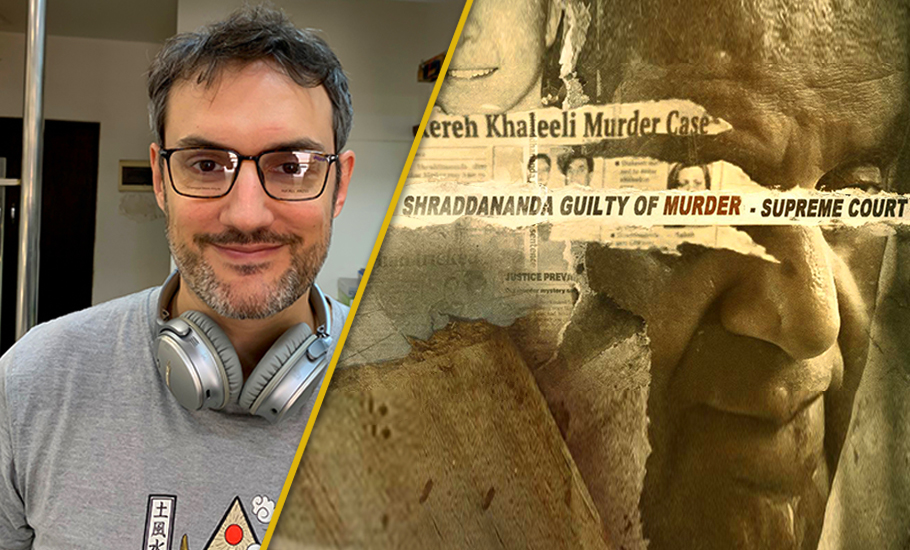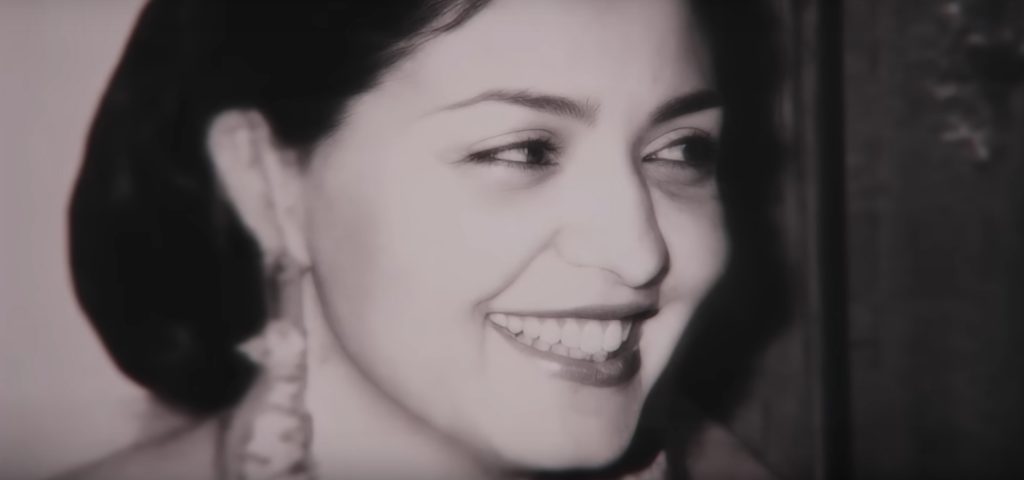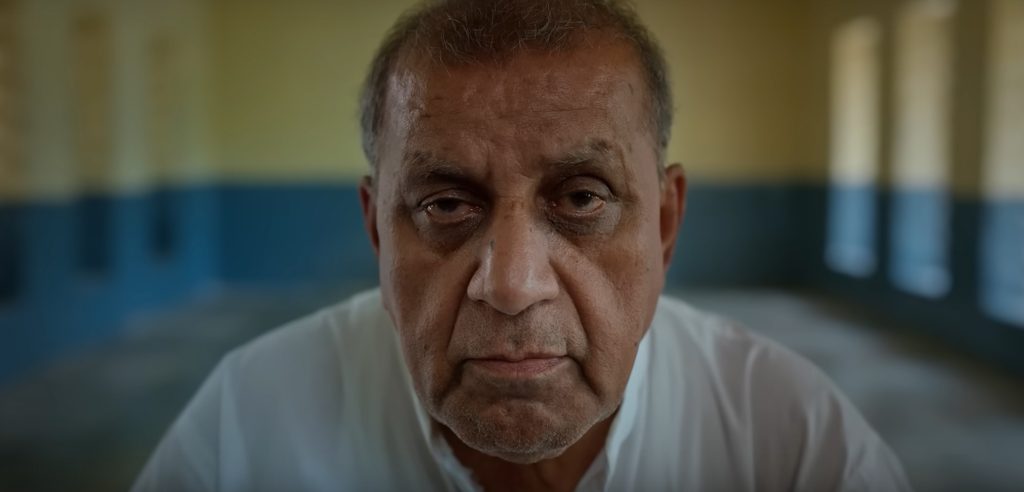
Dancing on the Grave director delves into the 'why' behind grisly 1991 murder
Why recall Shakereh's murder after decades? Why give space to 'Swami' Shraddhanand's viewpoint? Patrick Graham explains his choices

Dancing on the Grave, a docu-series on the shocking, sensational murder of the granddaughter of Sir Mirza Ismail, the former diwan of Mysore, in sleepy, laid-back Bangalore of the early 1990s, is engaging and chilling like any well-made true crime series on OTT platforms today.
Even if you are familiar with the tragic tale of the aristocratic Shakereh Khaleeli, who was duped by her second husband, Murli Manohar Mishra (a self-styled godman better known as Swami Shraddhanand) and buried alive in her own backyard, this Amazon Prime four-episode docu-series keeps you invested.

The series taps into archival footage, interviews with family members, Shakereh’s old photographs with her first husband (a diplomat who was also her first cousin) and her four daughters, and the reconstructed scenes of what may have happened, to build the story. But, what is disturbing (at first) is the ominous presence of Mishra or Shradhanand, who has been sentenced to imprisonment until death in the Shakereh murder case, telling his side of the story.
Watch: Sensational Shakereh murder case is now a docu-series on Amazon Prime
In jail for 30 years now, and currently lodged inside the Sagar Central jail in Madhya Pradesh, Shraddhanand was recently in the spotlight for filing an appeal in the Supreme Court to free him on grounds of good conduct. “If Rajiv Gandhi’s killers can be freed, why can’t I?” he had asked in his petition. Just last week, the SC turned down his appeal, noting that it had ordered that he shall not be released till the end of his life. And, it would not go contrary to that order. “Normally, life means life,” noted Justice KM Joseph.

Meanwhile, the 82-year-old Shraddhanand also filed a case against the makers of Dancing on the Grave, since the series allegedly adversely affected his legal rights in a sub-judice matter (this was before the SC turned down his petition).
Also read: Cracked mirror: The cinema of the infinitely resilient women of Iran
In a conversation with The Federal, Dancing on the Grave director Patrick Graham, (of zombie TV series Betaal fame, a Shah Rukh Khan production), defends their decision to include Shraddhanand in the series. “It’s important to hear his story, to get an insight into who he was and how he had won the trust of a woman like Shakereh. He also gave us more insight into Shakereh’s character, he was the closest to her before her death,” he says.
With no access to Shakereh’s daughters, who have refused to talk, the docu-series’ makers instead rely on archival footage of old interviews given by Shakereh’s mother and her second daughter Sabah Khaleeli. It was Sabah who actively persisted and pushed the police to crack the case of her missing mother. They also interview the judges and senior SC lawyers who were part of the Shraddhanand case. There’s a pertinent quote by advocate Sanjay Hegde — like ‘Ravana in the epic’, Shakereh’s second husband had done the worst crime of donning the saffron (ascetic’s) robe to lure her, he says.
A good storyteller
On Shraddhanand, Graham recalls feeling he is such a “good storyteller” who can spin a good yarn. The film crew almost felt sorry for this “old man” in jail, he remembers. So, did he feel Shraddhanand was innocent as he claims in the series? (According to Shraddhanand, his wife Shakereh was already dead and he buried her fearing that people would blame him. But, what the court was told from police investigations and Shraddhanand’s own confession, was that he had ordered a wooden box and laced his wife’s tea with sleeping pills and buried her alive. There were nail marks inside the box when it was unearthed three years later, proving that she had been buried alive.)
Graham brushes aside Shraddhanand’s claims of innocence, pointing out that “he has been convicted by several courts”. However, the director admits that being a good storyteller, he manages to plant a seed of doubt in one’s mind that is reflected in the series. “The facts, however, speak for themselves,” he adds.
There is also a telling shot in the series when the camera catches Shraddhanand in a casual mood, as he plays with a cat on the jail grounds and fondly caresses the feline. He also castigates the cat for constantly eating snakes. Then, as he lets the cat go, he cackles to comment, “Maybe this cat is Shakereh’s ghost.” For a moment, it seems like he literally lets the cat out of the bag at this point (pun intended), as he reveals his malicious side.
Graham agrees that Shraddhanand’s guard had slipped at that point. It is only when facing the camera that he ostensibly dons the role of a poor, innocent man who got into serious trouble after marrying a rich woman like Shakereh.
On getting Shraddhanand to agree to appear on their show, Graham says, “Shraddhanand probably thought there was value in telling his story. When you have told a lie so many times over three decades you start believing it yourself. Maybe, he felt he could persuade audiences he was innocent. Importantly, we needed his perspective to let the audience see him for who he really is.”
Graham is not surprised Shraddhanand turned around and filed a case against the makers of Dancing on the Grave. “In my view, he was just pulling more tricks so he could get mileage for his plea before the Supreme Court. Obviously, it did not work,” he points out.
Besides giving Shraddhanand screen time to say his piece, the series attempts to tell Shakereh’s story, trying hard to piece together why she had made some ‘extreme decisions’ in her life. Graham says it is unfair that she has been dismissed as gullible and silly for marrying a man like Shraddhanand, who was so obviously not in her class and was a schemer who clearly manipulated her. Shakereh divorced her first husband and married Shraddhanand, who at that time was helping the family solve multiple legal tussles over several properties.
“Being buried alive would be anyone’s nightmare, understandably so, but we wanted a deeper understanding of why this well-educated woman from a wonderful family with a perfect life from the outside was unhappy. And, why she took the extreme step of leaving a family behind and starting a new one with this man who everybody could see was not to be trusted. Her extreme decisions led to her downfall. That was an intriguing aspect for me,” he explains.
Also read: ‘The Night Manager’: Why was Anil Kapoor worried about his role? Director Sandeep Modi reveals
The series suggests that Shakereh was probably unable to cope with the rigours of being a diplomat’s wife and trying to take control of her life. “She had been told early on in life whom to marry. She was told to have children, which she did. She was clearly lonely and isolated and probably decided to take control of her life. But, she paid the price for going against her family and society. However, we need to understand what kind of desperation led her to make those drastic decisions and that is the crux of the matter,” says Graham.
Ethical issues in retelling true crime stories
On ethical challenges while making true crime stories, Graham says they were careful not to sensationalise the series to upset or hurt the family. “It is a tribute to Shakereh, to honour her memory to some degree and exonerate the accusations that maybe she was stupid,” he claims. And adds that there is value in telling crime stories because they do serve as “warnings and lessons to people”.
True crime blitz on OTT
Graham believes we are in the ‘golden age’ of TV true crime documentaries. It has been thriving particularly over the past five years, he points out. “It started with the Making of a Murderer on Netflix. These crime stories are incredibly slick and have become the main source of entertainment,” he says.
“It is an established format today. True crime stories are told as engagingly as possible and that is done by hearing from the people involved. So, scenes are recreated and made visually interesting and it is made as cinematic as possible. But while telling the story you have to be careful it doesn’t go into cheesy reconstructions,” he explains.
In Errol Morris’ excellent docudrama, Wormwood, on the 1953 mysterious death of scientist and CIA employee Frank Olson, Graham says that the director takes it into the realm of recreating dialogues between actors. “We did not go down that road. We tried to keep Dancing on the Grave impressionistic, and tell the story in an elegant way without taking away from the facts,” he says.
On why true crime is fascinating for people, Graham says that people like to hear about crime, especially within their own society. “Every country likes to hear its crime stories. It could happen to you. It is nice to hear that it happened (only) to other people, watching it in the comfort of your home. But, at the same time, it is happening in the real world and there is the fear that it can happen to you.”
“It is also like a catharsis when criminals are put behind bars, you feel good when people who do bad things get caught,” he rationalises. In his view, an incredible true crime documentary is The Staircase recently adapted as fiction, on the compelling story of Michael Peterson, a crime novelist accused of killing his wife Kathleen. Netflix’s Murdaugh Murders: A Southern Scandal is another riveting one, he shares.


